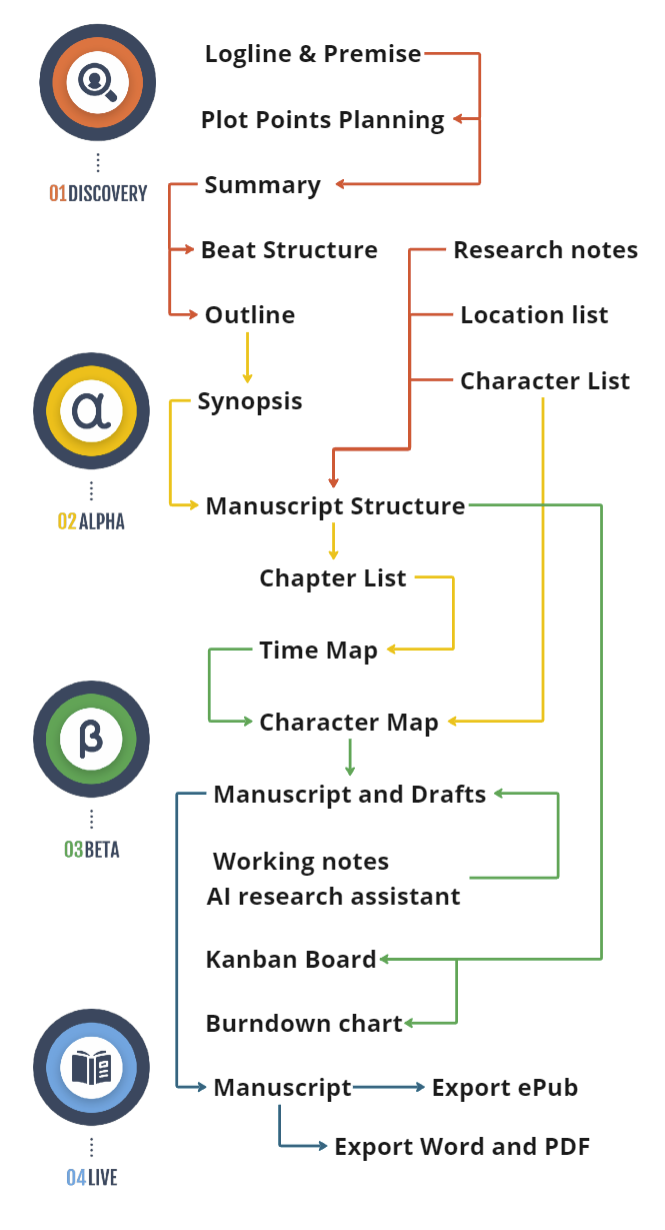Writers often focus on linear progress: page one, page two, chapter after chapter. But consider another pattern—a spiral. Rather than marching forward in a straight line, a spiral draws us back around, deeper each time. It revisits what came before while expanding outward, opening new pathways for creativity. This approach can lead to transformative writing because it honors the recurring nature of ideas. An initial thought might come back with new color, depth, or nuance.
In the hush of a spiral moment, you realize that revisiting your beginnings is not regressive. Instead, it can spark revelations about where your characters need to go or how your themes can resonate more powerfully. The spiral mindset is about iterative discovery—coming back to the starting point but never in exactly the same way.
Adopting a spiral mindset means valuing repetition with a purpose. In practical terms, this could look like returning to a previous scene to see if the protagonist’s growth is reflected properly, or revisiting an abandoned idea to incorporate it in a surprising way. It’s not about rewriting the same words endlessly; rather, you let your story revolve in cycles, each pass uncovering new layers. Think of it as excavation: every time you circle around, you find a hidden gem you missed before.
Writers who enjoy complex story arcs or layered themes often find the spiral mindset particularly rewarding. Novelists weaving multiple timelines, short story writers tackling recurring motifs, and memoirists wrestling with the same emotional undertones across different life stages all benefit from seeing their work as cyclical rather than linear. If you’ve ever felt that your story “wants” to loop back on itself—to revisit a flashback or echo an earlier line—this approach might be precisely what you need to unlock new depth.
- Map Your Loops: Create a simple diagram that shows the main beats of your story. Identify points where returning to an earlier beat could introduce a twist or highlight character development.
- Draft In Layers: Instead of trying to perfect each chapter before moving on, allow yourself to draft swiftly. Then, on your second or third pass, zero in on the repeated motifs, references, and callbacks.
- Embrace Symbolic Echoes: Perhaps a minor piece of imagery—a locket, a certain shade of dusk—reappears at pivotal junctures. These echoes tie the spiral together, giving the narrative cohesion and an almost mythic resonance.
- Ask ‘What Changed?’: Each time you circle back, ask yourself: How is the protagonist’s perspective different now than it was the first time around? This question ensures you’re not merely repeating but evolving.
- Allow Surprises: A spiral leaves room for unexpected connections. You might discover that a seemingly trivial detail from chapter one plays a crucial role in chapter ten. Follow those threads fearlessly.
The spiral mindset can transform a decent story into one that feels alive, rich with recurring motifs and deeper layers of meaning. Readers often relish the sense of resonance and destiny such callbacks evoke. On a personal level, you might find the process more enjoyable because it acknowledges that creativity itself isn’t strictly linear—sometimes you need to wander back to old ideas, glean fresh inspiration, and spin them into something new.
Pick a scene you wrote months ago—one you haven’t looked at in a while. Reread it with fresh eyes, searching for a detail that could be woven back into a later part of the story. Let that one rediscovered idea spark a small but meaningful transformation, proving that the spiral path can open doorways you never knew existed.




